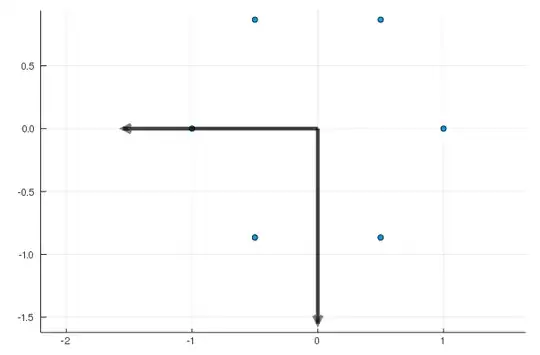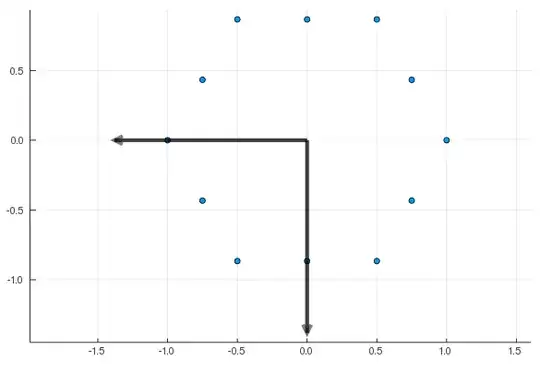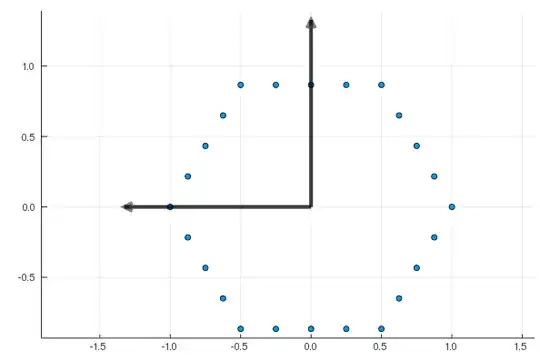I do PCA on the data points placed in the corners of a hexagon, and get the following principal components:
The PCA variance is $0.6$ and is the same for each component. Why is that? Shouldn't it be greater in the horizontal direction than in the vertical direction? The data is between $-1$ and $1$ in the $x$-direction but only between $-\sqrt{3}/2$ and $\sqrt{3}/2$ in the $y$-direction. Why PCA results in the equal length components?
The length of each vector in the picture is the twice the square root of the variance.
UPDATE: added more points, the variances changed to $0.477$ but still they are equal.
UPDATE 2: Added even more points, the variances changed to $0.44$ but still they are equal.


